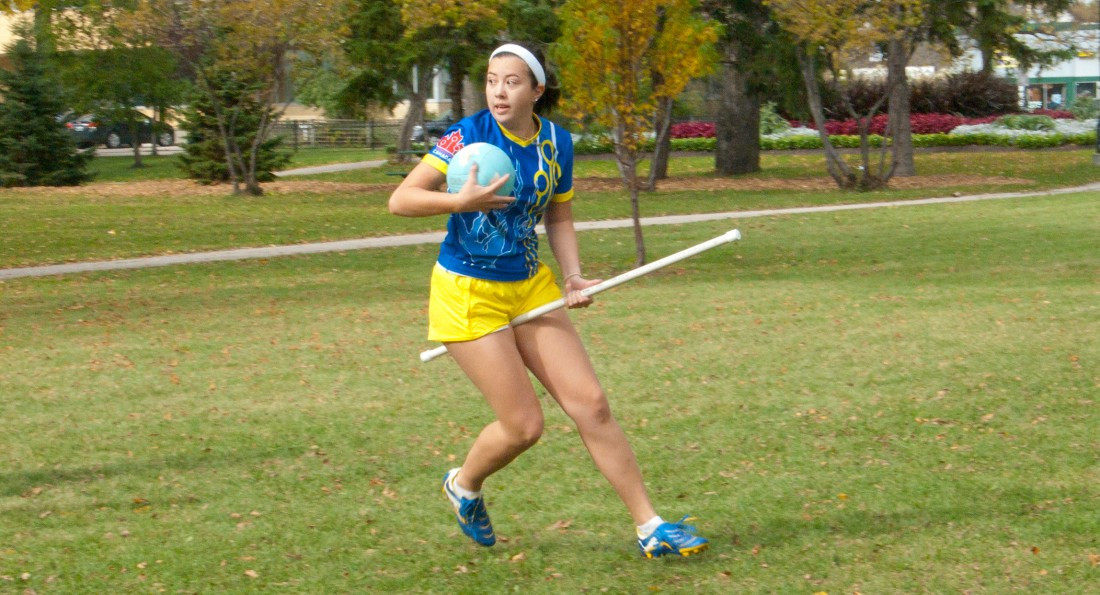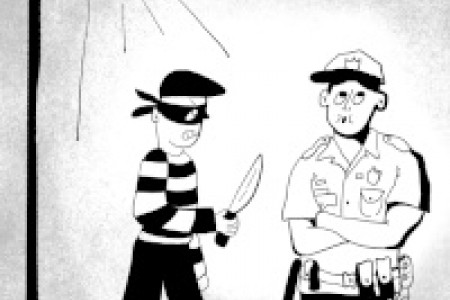Seeking the snitch
Whomping Willows bring quidditch to life
The magic of quidditch has left the pages and has manifested itself in our muggle world. The sport was first imagined in J.K. Rowling’s <i>Harry Potter</i> series, with wizards flying about on broomsticks, but avid fans figured out how to make it work without the benefit of wizardry.
Quidditch first touched down on Canadian soil in 2008 at McGill University, with the formation of a quidditch club. Carleton University, the University of British Columbia and the University of Calgary were among the first to form quidditch teams. In 2011, the first Canadian Cup was held.
Quidditch in Canada was overseen by the International Quidditch Association until it finally grew large enough to have national bodies. In July 2014, Quidditch Canada was formed to oversee local matches. Fast forward to 2016, when Canada competed and won fourth place in the Quidditch World Cup.
Today, there are many teams spread throughout Canada, many of which are attached to universities. The majority of official teams are concentrated in Quebec (around Montreal), in lower Ontario (around Ottawa and Toronto) and in British Columbia (around Vancouver). There are a smattering of teams spread out in Alberta, two teams in Saskatchewan, and one in Manitoba: the Winnipeg Whomping Willows.
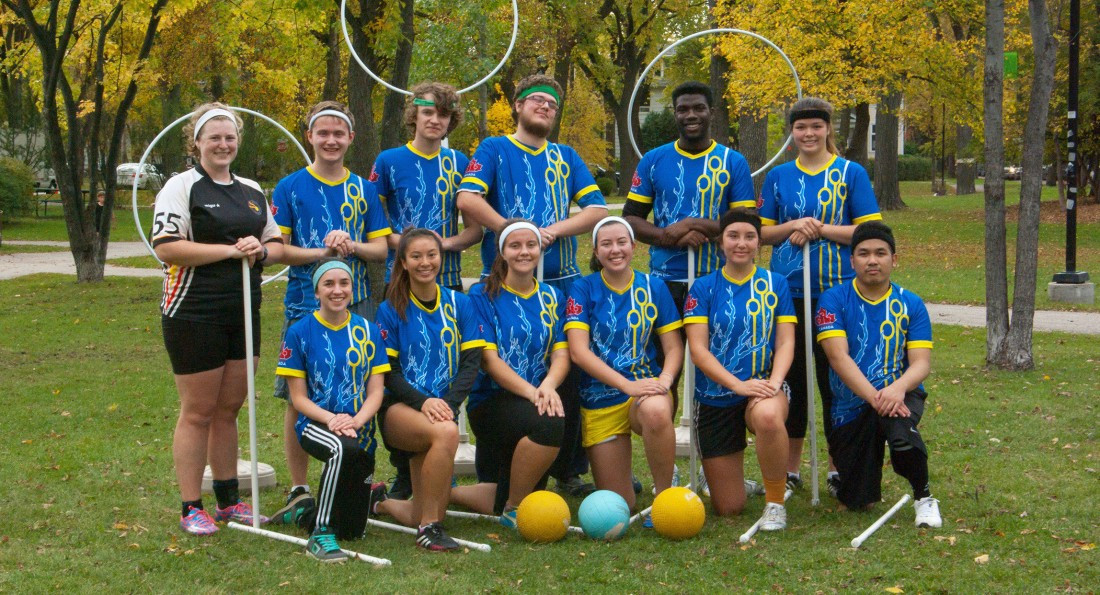
Break out your broomsticks! The Winnipeg Whomping Willows team are here.
How to Play
All team players have brooms between their legs, which they can’t drop.
Each player’s position – as beaters, chasers, keepers and seekers – is identifiable by the colour of their headband. There are three types of balls in play during a match: the quaffle, the bludgers and the snitch, which are usually used by different positions.
The chasers play with the quaffle. They can throw the quaffle through any of the hoops at each end of the field, from the front or from behind, to score a goal. Each goal is worth 10 points. Keepers are similar to goalies, and they guard the hoops.
Bludgers are the balls used by beaters. There are four beaters and only three balls. This position is reminiscent of dodgeball. If you are beat out (and drop your broom), you have to run back and touch your team’s hoops before rejoining the match.
The snitch, however, is more difficult to transfer from broomsticks to the ground. In Rowling’s books, it is a small ball that flies around by itself.
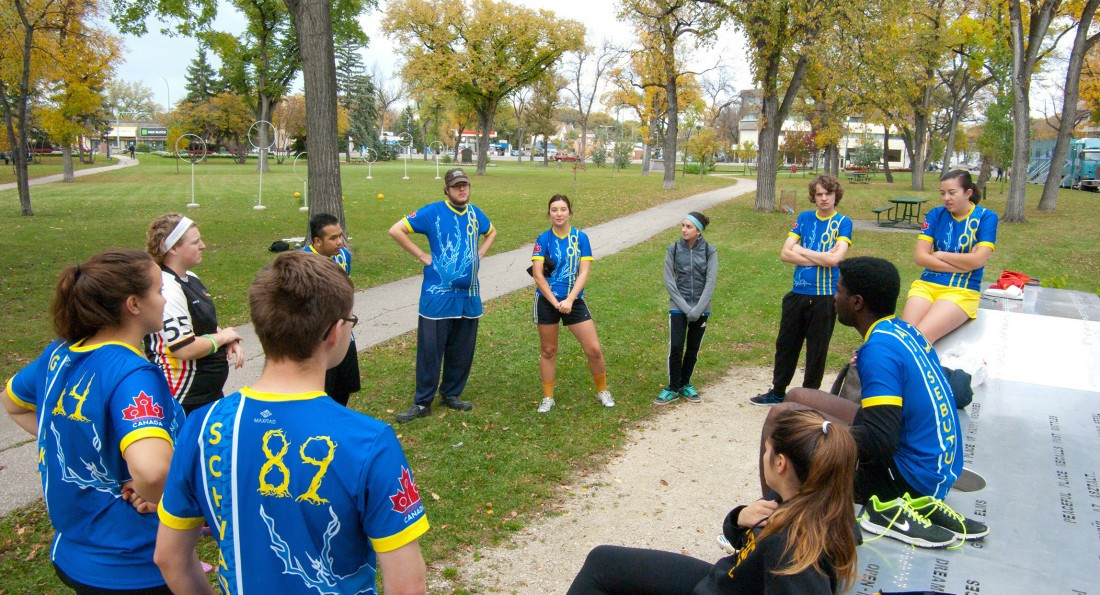
Beaters, chasers, keepers and seekers learn the drills.
The mystery of the golden snitch
The snitch is actually a ball in a sock. It is carried around by a person of a neutral party, neutral team or volunteer, attached to the back of their shirt. The snitch-carrier dresses all in yellow. The snitch is released onto the field after 17 minutes or so, and then the seekers are released after 18 minutes. The catch is that the seekers have brooms, while the snitch does not.
The team that catches the snitch (by pulling the ball in a sock off of the snitch-carrier) wins 30 points.
There are beaters on the seekers often if the game is within 30 quaffle points, with a full game going on around them. But brute force does not work very well. Snitches are often ex-wrestlers, cross-country runners or martial artists, and so they can defend the snitch.
There are a couple of different snitch styles. Wrestler snitches tend to plant and throw the seekers, while runners tend to have more movement.
Once the snitch is caught, the game is over. “Cold catch” is a term for when the snitch is caught, but the team who catches it does not win the game.
Seekers often are hybrid players who play multiple positions, because they only go on after 18 minutes. There really is not any point in having someone on the roster just to seek, because then they are wasted for the first 18 minutes of game time.
So what does quidditch look like in real life? The players tell all.
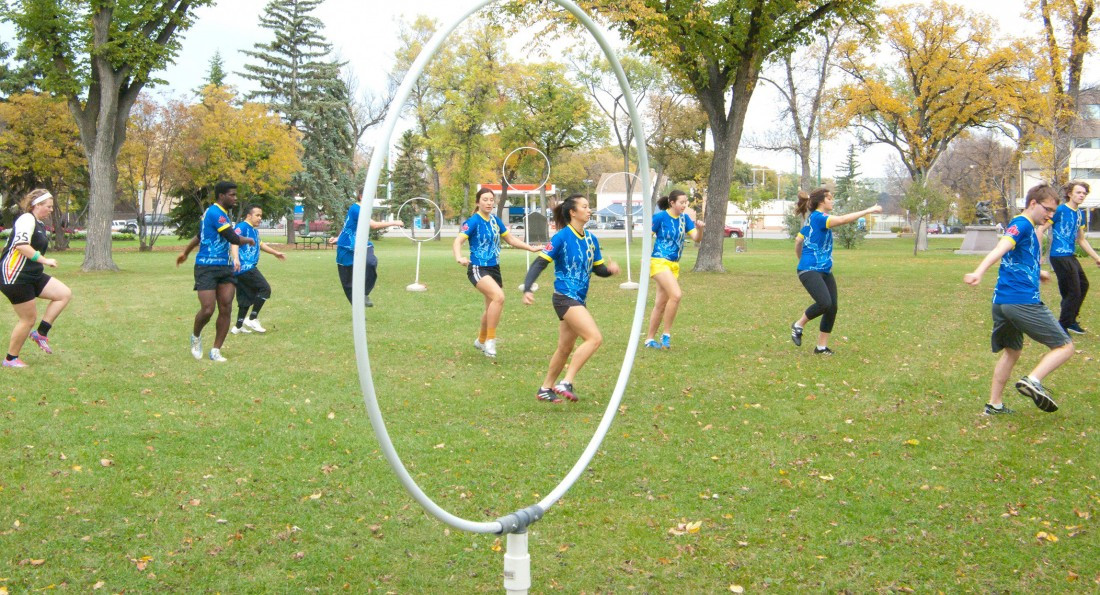
Quidditch is a good workout and demands a good warm-up.
Jasmine Winter
Why and how did you start playing?
Back six years ago I was choosing my school for undergrad for university, and I was pretty set on McGill, which is in Montreal. I knew they had a team, so I am not going to say it was the reason I went, but it was definitely part of the reason that I went. When I got there, tryouts were right away, and it was the most fun thing that I have ever done.
What do you like about the sport?
The sport is just so unique. Personally, I am a Harry Potter fan. I grew up with it, and being able to realize the sport in real life is so incredible. I think that I am so fascinated by the way that the sport has evolved, and how people have taken the rules from this fantastical word and applied it and made it so legit now, with all of the rule books and everything. It’s awesome.
The other part that I love is the community aspect of it. This summer, I was in Hawaii for a field placement for school, and I just checked to see if they had a team, and they totally did. So I had an automatic group of friends when I went to Hawaii, because I could play quidditch with them.
What is your favourite position?
I am a diehard beater. The beating position is the one where you get to throw dodgeballs at people. It is a very strategic position – there are so many tricks and strategies that are really fun and cool that you have to think through.
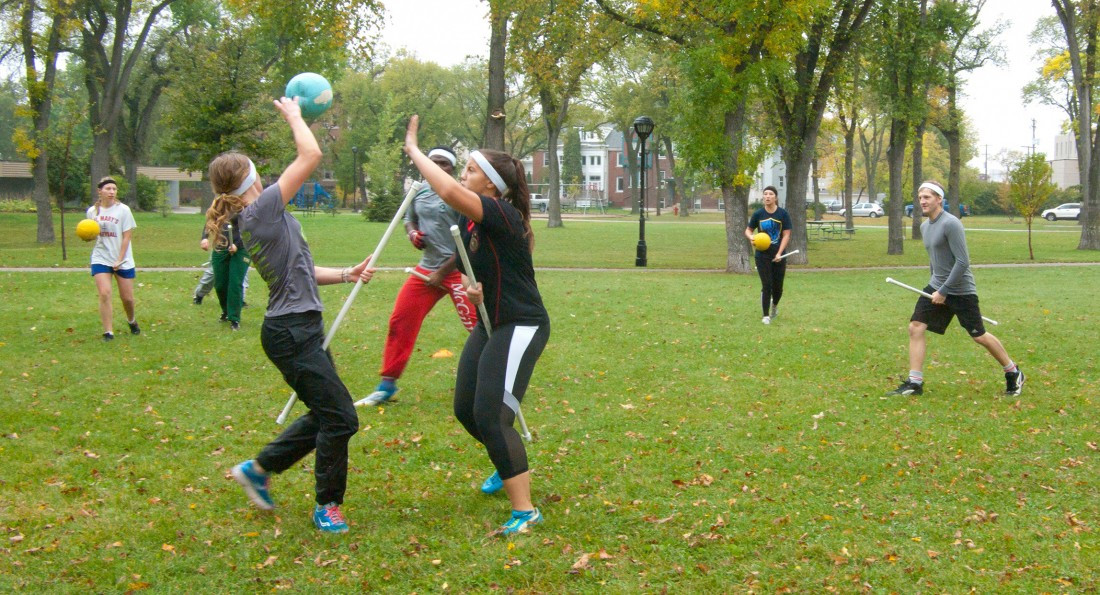
Dedicated players ignore the rain at Vimy Ridge Park.
Anne-Cecilie Panchaud
Why and how did you start playing?
My roommates are on the team, but I had heard about it before and wanted to play, but no one had a team at any of the schools that I went to. They were like ‘oh we have a team,’ and I was like ‘well then I am definitely playing.’
What do you like about the sport?
I like how it combines the fandom of Harry Potter, something that we grew up with (with sports) ... I read the book, and I just loved it, and the fact that they had a sport dedicated to it was super fun. I mean, I get a lot of smack about it, but ... I will play any sport.
What is your favourite position?
The beater. I have always liked defensive positions in any sport.
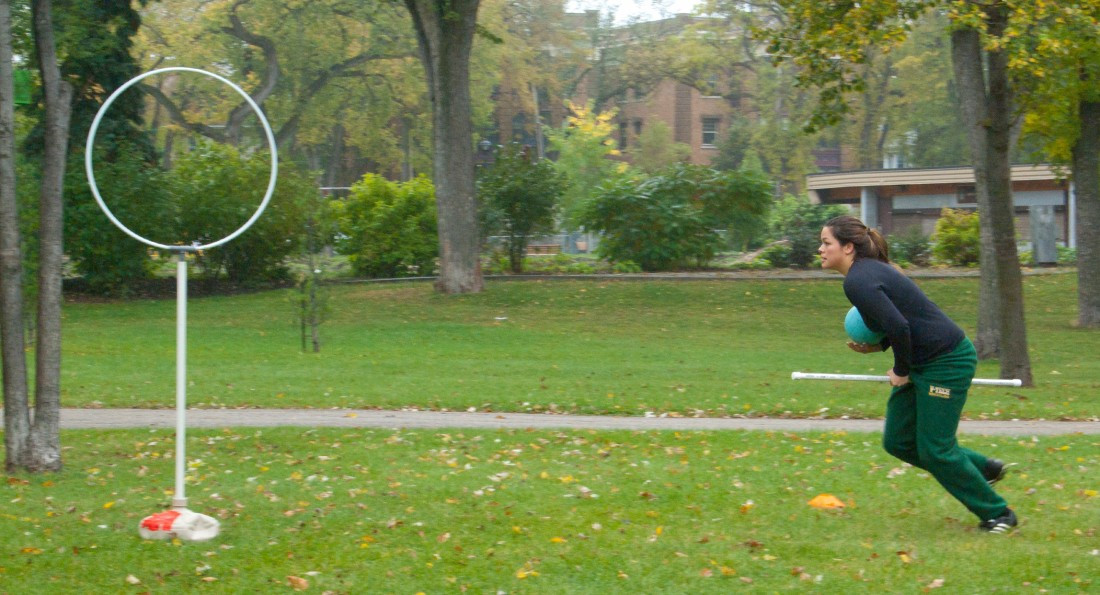
Anne-Cecilie Panchaud practices chaser drills.
Rebecca Alley
Why and how did you start playing?
I started playing in my first year of university in my undergrad at U Ottawa, which will be six years come January. These two girls wanted to start a team and decided to start in January in Ottawa for some reason, for some god forsaken reason.
So there was about seven of us. I guess I started playing a few months after Andrew. I have been to a few world cups down in the States. I coached team Canada in the 2014 Global Games. While I was in Europe last year, I helped run the European Club Championship and the National Team Championship this past summer.
What do you like about the sport?
I was on the organizing team for the World Cup in Germany. It was a blast. There were 21 teams from all over the world. We had like 3,000 spectators. It was pretty incredible what we managed to achieve.
I have done a lot of coaching. I was pretty broken for a couple of years, so I did a lot of coaching. I love playing. I got into it because my lab partner and I got drunk, and she was like ‘we have a quidditch team,’ and I was like ‘we have a quidditch team?’ and we decided to go to quidditch together. So the next morning, we went out to quidditch. I love the athletic challenge and the people.
What is your favourite position?
Chaser.
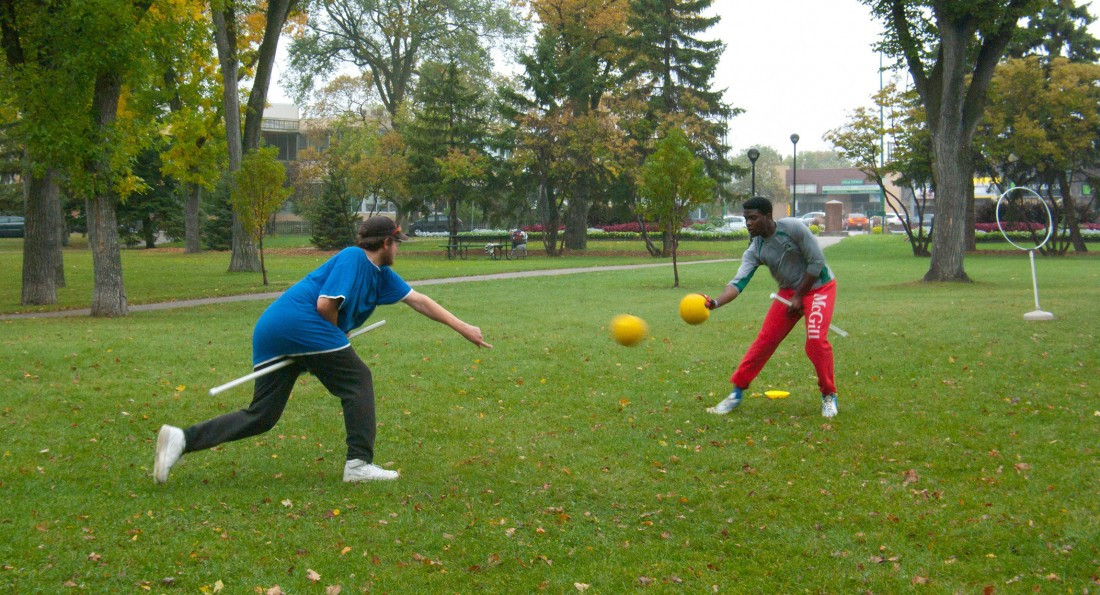
A beater drills with yellow bludgers.
Andrew Ajisebutu
Why and how did you start playing?
I started in my first year, undergrad. I was at McGill. I heard about quidditch from some friends, I was like ‘sure, I can play this, this seems ridiculous.’
What do you like about the sport?
Honestly it is hard to play your first time … I started playing six years ago and I have been playing ever since. I played with McGill’s ‘A’ team I guess, and I travelled a lot. I have been to Vancouver more than I should have been really based off my bank account.
What is your favourite position?
I really like seeking. Don’t tell my old coach, he preferred me in chasing. But I really love seeking. I play a hybrid, so I can do both.
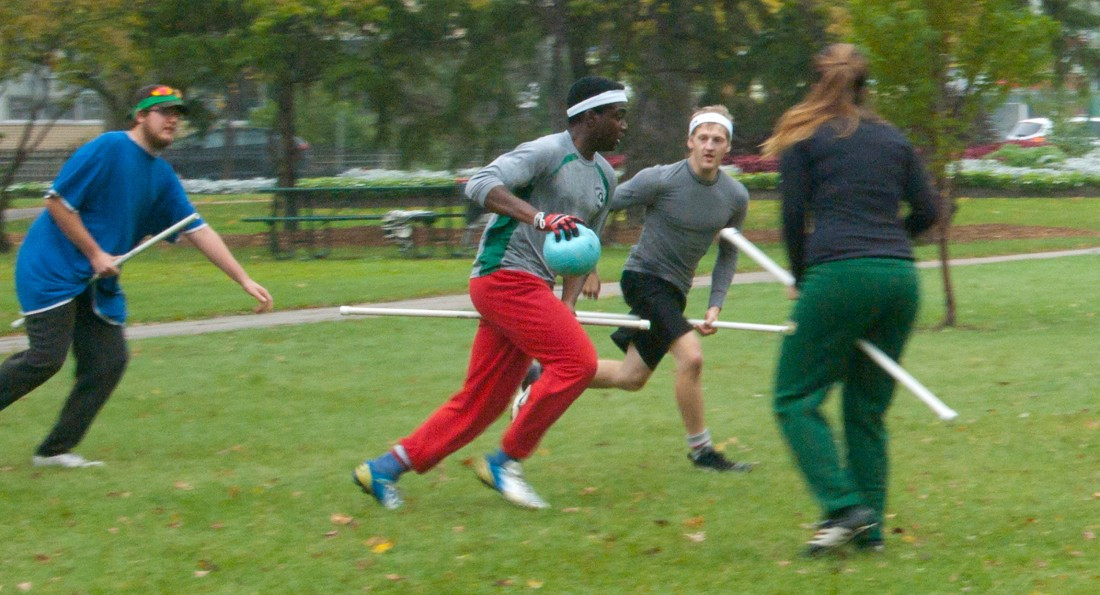
Players take a run at fun.
Asia Winter
Why and how did you start playing?
I went to university two years after my sister, and she went to McGill, and they have a really popular quidditch team, and she would always talk about it. (It) always sounded really fun, and after that, I guess I have always wanted to play. So after she came to the same university I did and created the team, and I kinda just joined along with her.
What do you like about the sport?
You get to meet a lot of great people, make a lot of friends, a lot of people around the university, and the people are amazing. Such fun and caring.
What is your favourite position?
(For) the first bit, beating. It was a lot of fun. I got to play with Jasmine. But recently, I think it’s chasing, but with this sport, you can play any position. It’s really on the fly, but … yeah, I think right now it’s chasing.
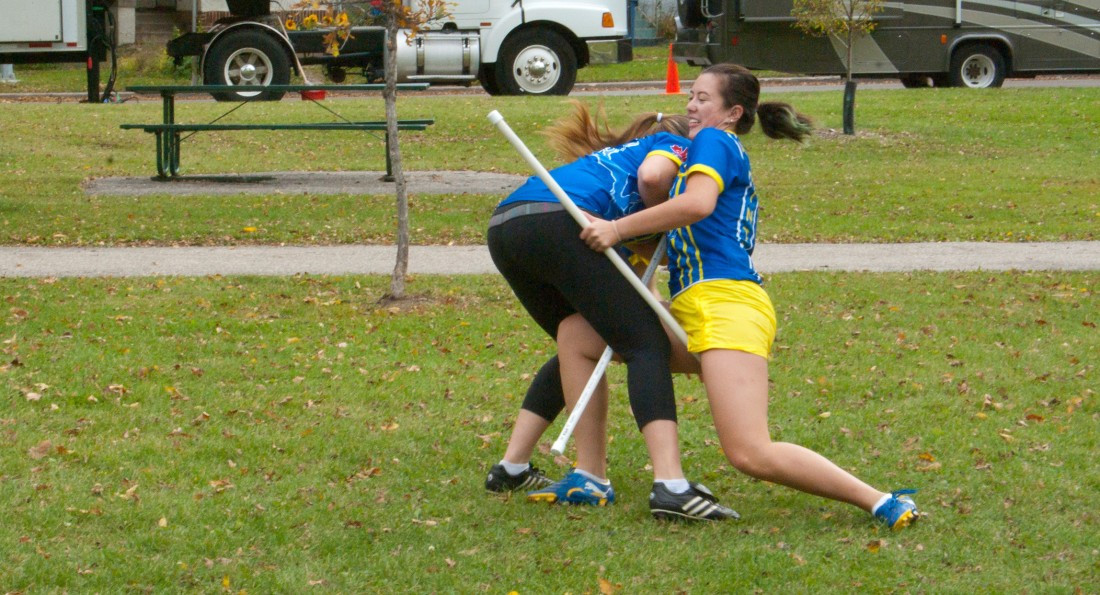
Asia Winter and Anne-Cecilie Panchaud practice tackle drills.
Published in Volume 71, Number 6 of The Uniter (October 12, 2016)

